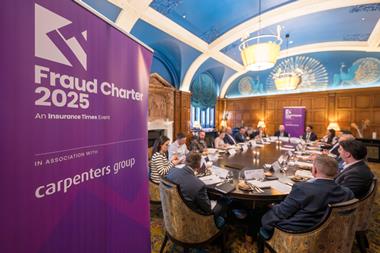The management of risk is fundamental to insurers. But the industry has been caught out by the development of new risks, which it has either failed to identify, or not properly damaged. Mark Hynes explains a number of emerging risks
Ageing population With life expectancy in the UK currently quoted as 76 years for men and 81 years for women, centarians will become commonplace within our lifetime. A falling birth rate and climbing life expectancy will have a dramatic effect on demographics and lifestyle.
Potential impact: As life expectancy increases, so too does the cost of compensation as an older workforce takes longer to recover from injuries and provides an extended period for 'long tail' disease to become apparent, increasing the number of claims and consequent costs.Slips and trips claims in particular could become more costly and there will inevitably also be more claims arising from new legislation on ageism and discrimination, due to be outlawed in 2006. In the motor sector, older drivers will suffer more ailments, have less flexibility and have a tendency to be over cautious in comparison with younger drivers. Realisation rating: 7/10
Biotechnology Biotechnology describes any activity involving the use of living organisms to develop food, medicines and other useful products. It includes the production of foodstuffs by fermentation (eg wine) or from bacteria cultures (eg yoghurt), the breeding of improved strains of plants and animals by selective cross-breeding and, most recently, genetic modification (GM), the 'cutting and pasting' of genetic material from one cell or organism to another.
Potential impact: While traditional biotechnology techniques enjoy a good track record in terms of low claims, there is concern that GM may be less safe. Widespread public concern about possible adverse human health and environmental impacts have fuelled a strong "anti-GM" sentiment, reflected in the refusal by many UK supermarkets to stock GM products. However, the introduction of GM into the food chain is taking place in other parts of the world and the UK is going to be affected eventually. With no proven claims to date, it is impossible to predict future hazards but it is anticipated that demonstrating a clear causal link will be a significant hurdle in pursuing a claim. In the meantime, food manufacturers will need to show increasing transparency on packaging and labelling and respond to changing demands for the use of pesticides and a growing attractiveness towards organic products and natural goods.Realisation rating: 4/10
Cyber and IndustryThe digital revolution has meant that intelligent computing such as virtual reality, speech recognition, complex networking, lights-out factories and robotics have all become part of the everyday manufacturing environment.
Potential impact:Insurers will need to be able to differentiate risks that appear under the same business description but use very different manufacturing methods. We will need to understand the repercussions of the effect on the workplace of lights-out factories and remote security monitoring and their likely effect on response times to fire or theft. For example, business interruption exposures may increase due to the difficulties in rapidly replacing complex equipment, but with improved fire detection and prevention equipment, the response to outbreaks of fire will continue to improve.Will more people be employed in clerical roles with higher salaries and less in the hands-on roles in industry? Will off shoring increase significantly for where lights-out factories are located and the clerical teams that support them? Are service industry jobs likely to be less secure in the UK? Do existing businesses have sufficient money and expertise to exploit this technology compared to new businesses starting up?Realisation rating: 5/10
Cyber TerrorismThe internet is a facilitator and enabler of worldwide digital warfare, providing a battleground for remote attacks on unsuspecting and unprotected networks. In October 2003, over 200 company websites were defaced with pro-Islamic messages. The estimated total cost of hacking attacks grew from £473m in 2001 to £780m in the first ten months of 2002.
Potential impact:While industries most at risk include air traffic control, financial services, utilities, transport and manufacturing, SMEs have also become economic targets for terrorists. Smaller companies are often at a higher risk of attack due to their lack of investment in information security and risk management. The insurance industry will need to help its customers to identify the additional risks they may now face. These risks include new phenonoma such as phishing (hackers trying to trick people into revealing personal details like credit card numbers by setting up fake websites or sending emails that appear to come from legitimate sources, like their bank) and identity theft (impersonating another person or company). Advice will be needed on how they can better manage security risks, libel, trademark, legislation and jurisdiction issues as they expand activities on the Internet and trade outside the UK. Realisation rating: 5/10
DVTDVT is a serious condition where blood clots develop in the deep veins of the legs and a pulmonary embolism causes the clot to travel from the legs to the lungs, causing death. It is estimated that more than 2,000 die from flight related DVT every year in the UK alone.
Potential impact:As well as increased claims from airline passengers, liability cases could also arise from coach and rail travel, general driving and computer use. Those individuals who pose a high risk should be identified and made aware of the precautionary approaches needed to reduce risks. Claims could also come in under employers' liability (EL) covers from long-distance lorry drivers.Realisation rating: 3/10
E.M.F. - Electromagnetic FieldsPublic concern over the possible consequences of exposure to electromagnetic radiation is peaking. Exposures include working or living in close proximity to high voltage power lines or telecommunication base stations, and the use of mobile phones.
Potential impact: Research continues on the possibility of links between EMF and ill health. The government study of research carried out in 2000 established that there is no evidence to support links and recommended further studies. But it also suggested some immediate precautions, such as controlling or reducing the use of mobile phones by children/young people. More recent studies have continued to support this position. Alongside possible product liability exposure from mobile phones, EL claims could also be seen from employees alleging that their employers provided them with unsafe equipment. However, it should be borne in mind that the most significant risk from the use of mobile phones remains the use of handheld phones while driving - a risk controlled by legislation since December 2003.Realisation rating: 5/10(NB: Realisation ratings are defined as the likelihood of the risk occurring and its potential impact on the insurance industry.)




































